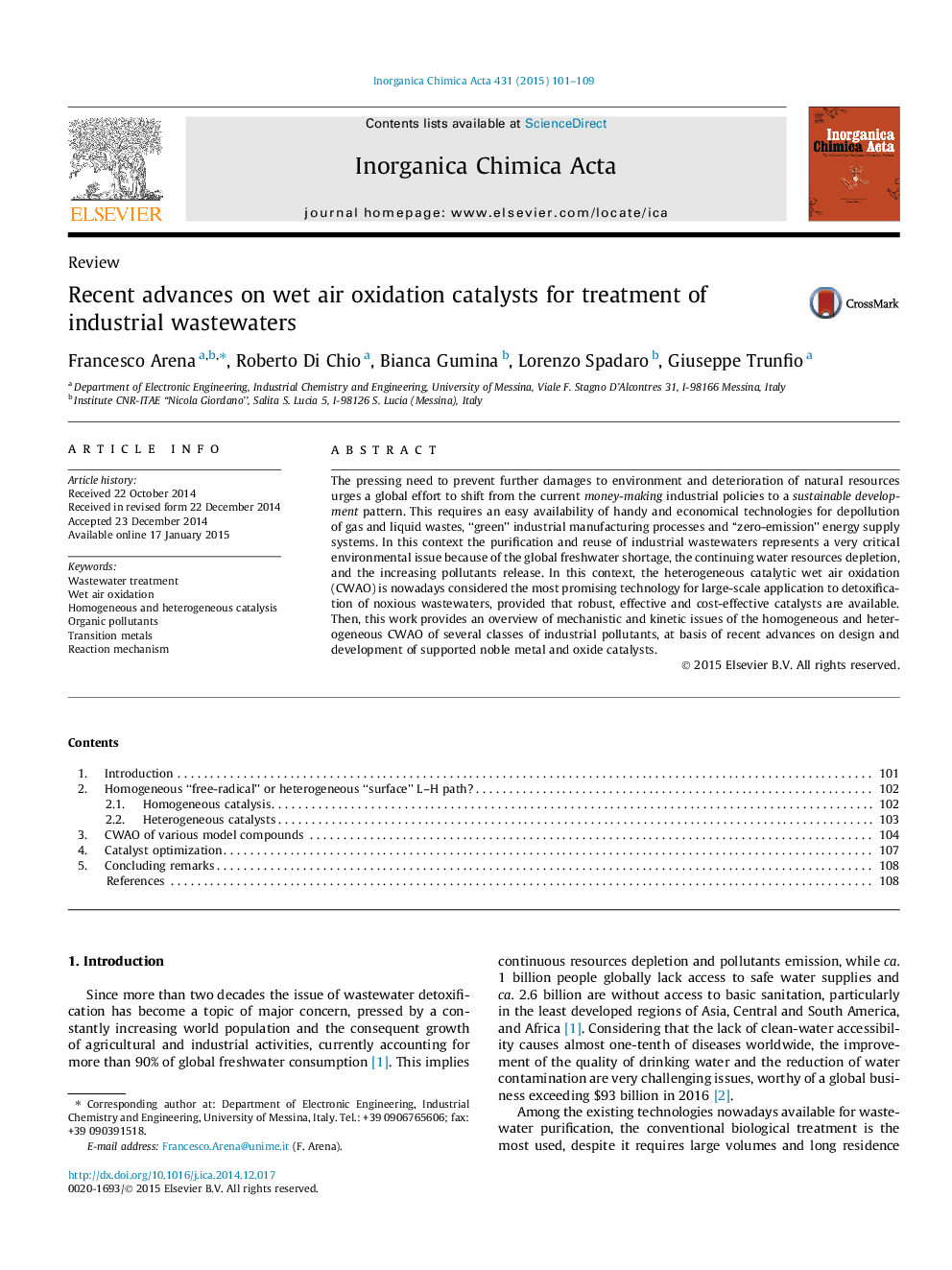| Article ID | Journal | Published Year | Pages | File Type |
|---|---|---|---|---|
| 1307930 | Inorganica Chimica Acta | 2015 | 9 Pages |
•The mechanisms of the catalytic wet air oxidation (CWAO) of organic pollutants are assessed.•The heterogeneous CWAO proceeds via a surface Langmuir–Hinshelwood reaction path.•Surface oxidation is the rate determining step of the CWAO process.•High chemical stability, surface area and redox strength are basic catalyst requirements.
The pressing need to prevent further damages to environment and deterioration of natural resources urges a global effort to shift from the current money-making industrial policies to a sustainable development pattern. This requires an easy availability of handy and economical technologies for depollution of gas and liquid wastes, “green” industrial manufacturing processes and “zero-emission” energy supply systems. In this context the purification and reuse of industrial wastewaters represents a very critical environmental issue because of the global freshwater shortage, the continuing water resources depletion, and the increasing pollutants release. In this context, the heterogeneous catalytic wet air oxidation (CWAO) is nowadays considered the most promising technology for large-scale application to detoxification of noxious wastewaters, provided that robust, effective and cost-effective catalysts are available. Then, this work provides an overview of mechanistic and kinetic issues of the homogeneous and heterogeneous CWAO of several classes of industrial pollutants, at basis of recent advances on design and development of supported noble metal and oxide catalysts.
Graphical abstractHigh chemical stability, surface area and redox strength are basic requirements of effective heterogeneous CWAO catalyst design.Figure optionsDownload full-size imageDownload as PowerPoint slide
